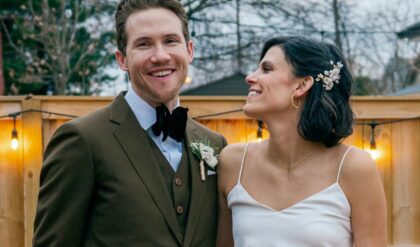In “The First Wives Club,” Goldie Hawn memorably outlined the three ages of women in Hollywood: “Babe, district attorney and ‘Driving Miss Daisy.’”
That was in 1996. Almost 30 years later, middle-aged women are everywhere. For every D.A., mother of the bride or groom, newscaster or president, there’s a woman in her 40s or 50s or beyond starring as the love interest or the leading lady. Think Demi Moore in the body horror film “The Substance” or Julianne Moore and Tilda Swinton in Pedro Almodóvar’s “The Room Next Door” or Angelina Jolie as Maria Callas in “Maria.”

Then there’s Nicole Kidman who, of late, has been busier than ever, playing the expected and the less-expected parts on screens large and small.
What’s remarkable about Ms. Kidman’s trajectory isn’t just that she has continued to work so steadily. It’s that along the way she has transformed her onscreen presence and her role in her industry. Once she was celebrated for playing the object of a man’s desire, in movies made by men and in large part for men; today many of the projects she stars in and produces are written and directed by women and aimed squarely at a female audience. Having come to prominence as an object of the male gaze, she now performs and creates for the female gaze.
That is an unusual choice for a woman in her late 50s in an industry that remains both youth-centered and male-dominated. It should be no surprise that Ms. Kidman’s recent roles have won her legions of female fans. Nor should it be any surprise that they have also won her a healthy dose of disdain from some cultural gatekeepers.
Sign up for the Opinion Today newsletter Get expert analysis of the news and a guide to the big ideas shaping the world every weekday morning.
Neither side can deny that Ms. Kidman has been busy. Since 2018, she’s appeared in 10 movies and eight TV series — far more than many of her peers. She has been in superhero movies and art-house films and, most notably, in streaming series after streaming series.
Some of those parts hew to industry standards, like the wealthy, wronged wife she has played several times — most recently in “The Perfect Couple,” which some woman in your life is probably bingeing as we speak. But in the rom-com “A Family Affair” she shares nude scenes with a much younger and super-buff Zac Efron. And in “Babygirl,” coming in December, she’ll play a chief executive and a mother who’s happily married (to Antonio Banderas, no less) but decides to explore her B.D.S.M. fantasies with the 20-something office intern.
As surprising as it is to see any woman pushing back so vigorously at the old ways, it’s even more surprising that it’s Ms. Kidman. In the 1990s she was at least as famous for her beauty, and her marriage to Tom Cruise, as she was for her talent. Other female stars were spunky or quirky or sexy or relatable girls next door. Ms. Kidman was ethereal. And while she didn’t hesitate to take on challenging roles (or to wear the occasional unflattering prosthetic nose), no one would have picked her as the star most likely to chart her own new course through the industry.
But here we are. In 2010, Ms. Kidman (along with her partner, Per Saari), founded Blossom Films. In 2017 she made a vow: to work with a female director at least once every 18 months. “As a woman in this industry,” she said, “if you have a little power, if you have the chance to get something greenlit, if you have the chance to say who you want to direct it, if you go, ‘I want a female to do this,’ that will help.”
Blossom Films works with male directors, too, but on women-centered projects it has the process down to a science: Option a piece of intellectual property from a best-selling female novelist — Liane Moriarty, Jean Hanff Korelitz, Elin Hilderbrand, Janice Y.K. Lee — that has a part for Ms. Kidman to play, along with juicy roles for other women, not all of whom should be thin or white. Commission women to write scripts and female directors to shoot them. Before the popcorn’s out of the microwave, the audience will have assembled, remotes in hand and weighted blankets on laps, ready for addictive story lines, inviting locales, designer outfits and upscale interiors.
But Ms. Kidman gives them something more. Instead of just inviting viewers to admire her face and form (and her personal shopper), Ms. Kidman’s current work allows them to admire her characters’ power as well as their vulnerability. If there are attractive young things lounging around that Nantucket swimming pool, some of them are men. If Ms. Kidman is doing a nude scene, her male co-star is usually just as exposed.
Members of the Blossom family include the rising Australian star Zoe Terakes and the American actor Ji-young Yoo, the directors Lulu Wang and “Babygirl’s” Halina Reijn, along with the novelist Janelle Brown, whose work Ms. Kidman is adapting. All talents whose careers got a boost they might not have found in the sea of men-for-men productions.
Despite this record, not everyone is impressed. In a recent Time magazine essay, Judy Berman lamented that “every few months,” Ms. Kidman “seems to be back on our televisions playing yet another rich mother on the verge of a nervous breakdown,” adding, “By now, the A-lister’s very specific form of overexposure constitutes a more fascinating mystery than any whodunit in which she appears.” An article by Ben Travers in IndieWire, wondered, “Couldn’t she be using her A-list status to elevate more distinct stories directed by women? Do they all have to seem only a few degrees removed from ‘Big Little Lies’? Why does her approach to TV have to be so unvaried?” In Slate, David Mack sighed about her “beach-read cinematic universe.” (Everyone knows that cinematic universes should come from comic books, not beach books.)
Safe bets? Could be. Too commercial? If you like. Or maybe Ms. Kidman has identified an audience that’s long been ignored or talked down to and she’s smartly giving it what it wants — while giving a great many other women high-profile jobs or a foot in the industry door. Is that somehow less valid than making superhero movies for teenage boys?
You can long for the days when Ms. Kidman played a sexy janitor or a tragic, dying dancer instead of a successful executive. You can sneer at soap operas and beach books and, by extension, at the women who enjoy them. You can argue that thin, white, beauty-standard-conforming Nicole Kidman playing wealthy women draped in silk and cashmere feels less like feminist progress than capitalist stasis.
But recall that in 2016, when Ms. Kidman embarked on the first of her female-led projects, a scant 4 percent of that year’s 100 top-grossing films were directed by women. While still not as high as it should be, that percentage is now 14. This year, female stars of a certain age dominated both the red carpet and the conversations at film festivals.
Things aren’t perfect, but they’re better than they were. And with every limited series she’s made, every woman’s book she’s optioned, every female director she’s worked with and every non-male actor she’s hired, Nicole Kidman has made herself part of the solution.



